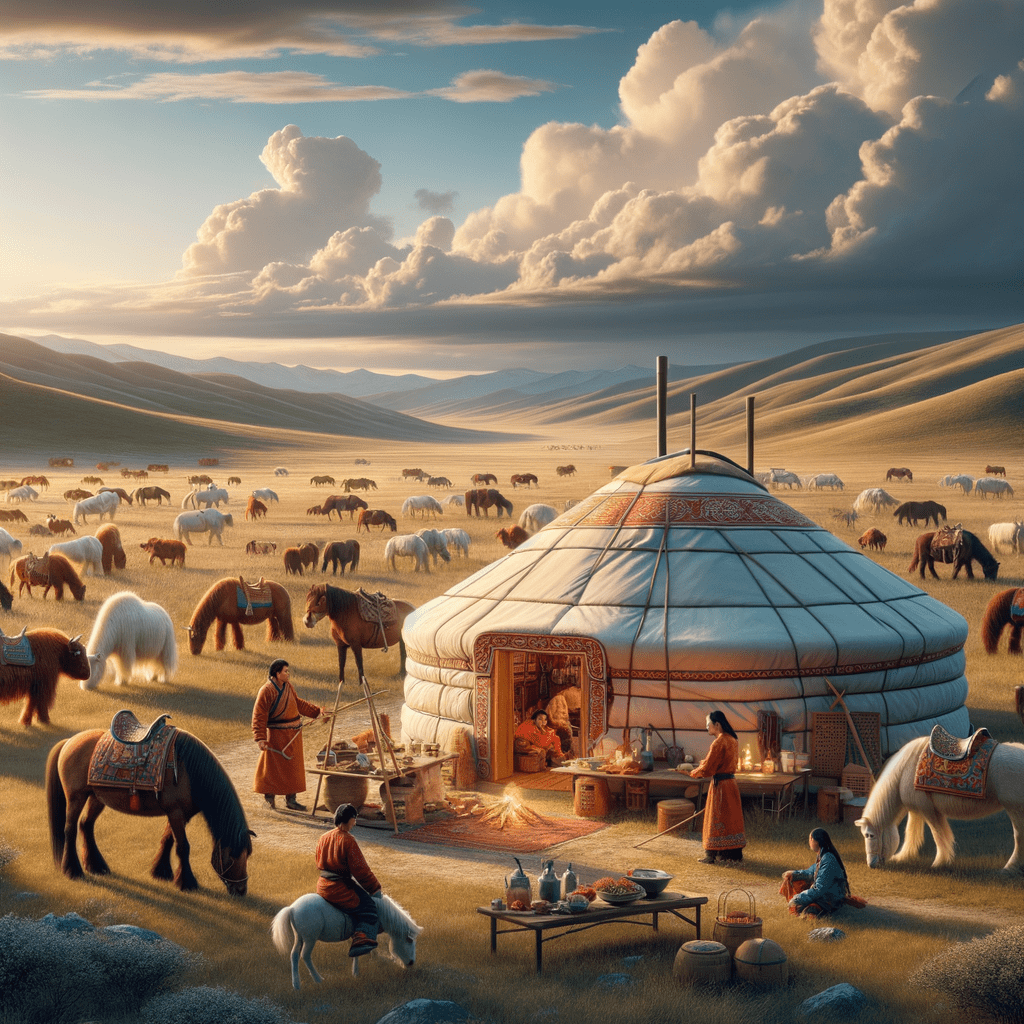Hey there! So, let’s dive into this little passion of mine: the vast open plains of Mongolia. There’s something wildly enchanting about them, don’t you think? I mean, just picture it—blue skies that seem to stretch on forever, rugged terrains, and herds of animals grazing with distant mountains looking on. It’s like a scene out of a fairytale, but what’s even more fascinating to me is the people who call this extraordinary land their home. Mongolia’s nomadic lifestyle has always captivated me. It feels like a relic from another time, a world far beyond our tech-hungry, urban reality. Yet, there’s something so perfectly free and simple about it that tugs at my heartstrings.
The Heartbeat of the Steppes
For centuries, if not millennia, Mongolia’s heart has been beating in sync with the rhythms of its nomads. These incredible people don’t just trudge across the plains—they are part of the land, and the land is part of them. It’s this almost magical relationship where survival mixes with tradition, creating a dance as old as time. Whenever I read about how they live, it hits me that “nomad” isn’t just a word for someone who moves around a lot, but it’s a way of life, a mindset steeped in harmony and respect for the natural world.
I once read about how Mongolian nomads can pack up their entire homes—those round, snug “gers”—in just an hour or two. Can you even imagine? Here I am, often struggling to find the right pair of socks when I’m packing for a weekend getaway, and they’re out there dismantling and setting up their whole lives quicker than I can say “woolly socks!” There’s an undeniable beauty in such simplicity. Their life is about stripping away all that’s not essential, focusing on what really matters. Compared to my overstuffed wardrobe and an attic filled with forgotten junk, that kind of stripped-down living screams freedom to me. And I can’t lie—it’s calling my name.
Cultural Threads and Community Bonds
What’s also incredibly cool about Mongolia’s nomadic lifestyle is the sense of community. It’s not just about people coming together; it’s this divine symphony of humans, animals, and earth moving as one. Families—sometimes spanning several generations—are like tightly-knit units, their existence intertwined with the changing seasons and the lives of their animals. Livestock aren’t mere creatures; they are livelihoods, trusty companions, and the source of countless tales passed down through the ages. Every person, from the littlest to the oldest, has a role that’s vital to keeping the community thriving. And oh, the pride toddlers have when they first ride a horse is beyond precious.
How they keep such warmth and happiness amidst the tough life they lead baffles and inspires me. There’s a strong sense of belonging and togetherness forged in the midst of life’s trials. It’s like they hold onto each other and their bond becomes this unbreakable anchor, giving them comfort and stability—something we, in our buzzing city lives, might be chasing without even realizing it.
Challenges and Resilience
Now, don’t get me wrong. It’s not as if being a nomad on the Mongolian steppes is all starry skies and delightful sunsets. It’s definitely no walk in the park! The climate out there can be extreme, with sizzling hot summers and eye-wateringly cold winters. And then there are the dreaded dzuds—those hauntingly harsh winters that can decimate livestock. With modern pressures creeping in, it’s like an added layer of difficulty for them.
Every challenge they face is like a test of their resilience. I often find myself in awe of how they manage to lace up their metaphorical boots and keep on going, no matter how hard life kicks them. It’s almost like they’re not just surviving but thriving, dancing with life’s punches in a way that makes me wish I had a fraction of their grit. Honestly, who wouldn’t be amazed by their ability to stand tall against nature’s fury?
Tradition Meets Modernity
Even out on those boundless plains, change is the only constant. While Mongolian nomads are firmly rooted in tradition, they’re not entirely cut off from modernity’s sparkle. They’re finding a delicate balance, one that could mean even more opportunities. I’ve heard of some using solar panels or even herding on motorcycles! Imagine—that juxtaposition of traditional garments and modern-day gadgets sharing the same space. Kind of cool, right?
But these modern comforts come with their own set of challenges. Urbanization is pulling the younger generation towards the cities, tempting them away from the nomadic ways their ancestors cherished. It leaves me wondering how one can preserve such a unique and valuable tradition in this whirlwind of change. Isn’t that a question we’re all tackling one way or another—how to treasure our past while racing towards an unknown future?
The Soul of a Nomad
On the surface, it’s easy to romanticize this lifestyle—feet up, imagining endless journeys and open skies. But the truth of Mongolian nomadism goes much deeper. It’s about adaptability, about knowing who you are, and respecting the earth that gives life. It’s a beautiful, messy, inspiring tapestry of stories woven from sheer perseverance, sacrifice, and a deep, unshakeable understanding of nature’s rhythm.
Reflecting on their lifestyle has given me a few lightbulb moments about my own life. It’s stirred something inside me, a desire for a connection to the land I walk on, to embrace all that life throws my way with grace and dignity. Maybe it’s just the dreamer in me, hungry for meaning amidst the chaos of modern living. Or maybe there’s a nomad in all of us, itching to break free, live simply, and find genuine connections.
At the end of the day, Mongolia’s nomadic lifestyle is more than just roaming vast lands; it’s a tribute to life itself, in its rawest, most untamed form. It’s an understanding that life’s journey is the destination, and often, living simply translates to living richly.




